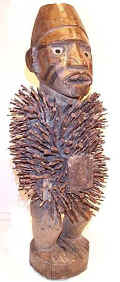 |
||||
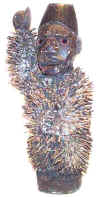 |
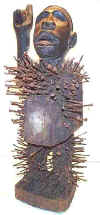 |
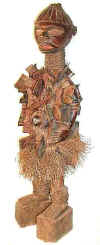 |
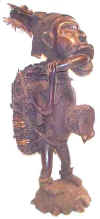 |
 |
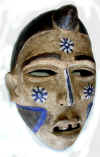 |
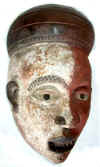 |
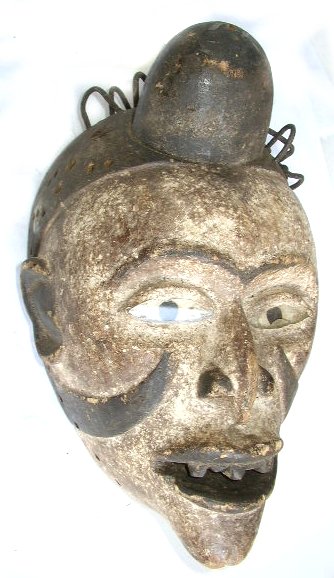 |
TRIBAL AFRICAN ART
YOMBE (BAYOMBE, MAJOMBE, MAYOMBE, MAYUMBA, MAYUMBE, YUMBE)
Both Congo Republics and Angola
Due to the thick forests surrounding Yombe territory the land must be cleared through slash and burn techniques before crops can be planted. The land is usually cleared by men, leaving the task of farming to the women. Plantains, manioc, maize, beans, peanuts, and yams are among the primary crops grown. These are primarily used for local consumption, but surplus is also sold in regional markets to obtain cash. Goats, pigs, chickens, and dogs are also raised. Fishing on the Congo (Zaire) river and its surrounding tributaries provides an important source of dietary protein. Men are also responsible for hunting, weaving, carving, smithing, and smelting. Women create clay pots for domestic use.
The forested region of the Lower Zaire River is important in the artistic history of black Africa, because it boasts the greatest concentration of maternity figures and stone statuary. The focal point is the vast Yombe area where numerous individual styles may be found. The Kongo kingdom influenced the Yombe who, at one point of their history, were an integral part of this kingdom. The 350,000 Yombe people are artistically prolific. They produced some of the finest sculpture in all Africa. Their statues contained the same themes as the Kongo's: maternity figures, seated kings, objects of prestige, and nail and mirror fetishes. The Yombe female phemba statues are used in divinatory practices or associated with fertility rites. Phemba figures represent women in seated, cross-legged, or kneeling poses with pointed or round coiffures, necklaces of glass or coral beads, a cord tied around the breasts, jewelry, and filed teeth. Women are an important Yombe symbol since they are considered to be not only a nurturing force, but also seers and guardians of the spirit. The maternity figures are carved of wood in a realistic style, rare in Africa. Mirror and nail fetishes have an aggressive expression characterized by an open mouth usually showing filed teeth. The rare realistic masks were worn during important communal ceremonies. The art of the royal court is manifested in objects of luxury such as commanders’ staffs, flyswats, scepters, swords, and musical instruments such as drums, trumpets and whistles. The mvuala scepter are ordinarily surmounted by refined female figures; sometimes they contain relics.